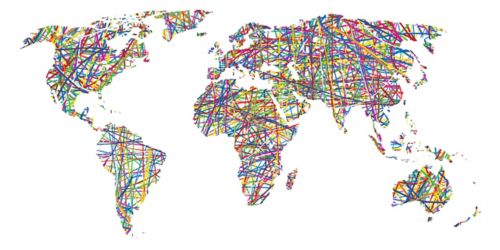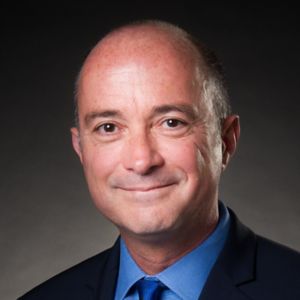St. Jude Family of Websites
Explore our cutting edge research, world-class patient care, career opportunities and more.
St. Jude Children's Research Hospital Home

- Fundraising
St. Jude Family of Websites
Explore our cutting edge research, world-class patient care, career opportunities and more.
St. Jude Children's Research Hospital Home

- Fundraising
Collaboration is the key to fighting childhood cancer worldwide

The one-year anniversary of the launch of St. Jude Global marks a milestone of a global movement that is making a difference in the world. But there is a lot more work to be done.
Every child, everywhere. Our work is incomplete until we bring diagnosis, treatment and cures to all children with cancer around the world. Our founder Danny Thomas declared on the day St. Jude Children’s Research Hospital opened its doors that “no child should die in the dawn of life.” No child, period. Our home is Memphis, Tennessee, but our hearts and our souls are around the world, wherever the children are.
St. Jude has a history of humanitarian relationships with key partners around the world that dates back more than 25 years. Our impact was meaningful, but not scalable. St. Jude created the Department of Global Pediatric Medicine in 2016 to advance the field of global pediatric oncology and blood disorders. After a two-year strategic planning process, the institution launched St. Jude Global on May 24, 2018. This ambitious initiative works to ensure that every child with cancer and other catastrophic diseases in the world will have access to quality care and treatment.
The burden of childhood cancer
It’s estimated that more than 400,000 children develop cancer around the world each year, but only half of them are diagnosed; all others die without even having a chance. Nine in 10 of these children live in countries where cure rates are less than 20 percent. Because of advances in the treatment of other life-threatening diseases, more children survive infancy. That means even more children stand the chance of developing cancer. But the greatest underlying factor in a child’s chance of surviving cancer is where he or she calls home. For children in high-income countries, the five-year cancer survival rate is 80 percent. The harsh reality is the majority of children with cancer live in lower- and middle-income countries. The gap in survival rates is among the greatest disparities in health outcomes worldwide.
Unfortunately, many children in lower- and middle-income countries go undiagnosed or untreated. But a failure to diagnose isn’t the only obstacle. A lack of appropriately trained staff, imaging and laboratory equipment, as well as a lack of access to more specialized techniques is a challenge. Through more education opportunities, we can help institutions around the world overcome these roadblocks to effective treatment and care.
In some countries, abandonment of treatment ends all hope. Even when treatment is available, many families abandon it because of their inability to pay, lack of social support, or profound misunderstanding of the cancer diagnosis and possibility of cure. For many children around the world, treatment abandonment is the biggest threat to their lives.
Launching our moonshot
Together with our global partners, we will ensure more children have access to and continue the vital care that will mean more survive. There is hope. Taking Danny Thomas’ legacy to the world is our moonshot. It’s not easy, but moonshots by definition are difficult. We don’t measure our successes in milestones, but it is important to pause and reflect on our journey this past year.
- In September 2018, St. Jude and the World Health Organization coordinated a High-level Meeting at the United Nations General Assembly hosted by the Permanent Missions of Uzbekistan and Jordan. The event, Ensuring a Right to Cure: Improving Childhood Cancer Care and Decreasing Global Survival Disparities, was supported by the Permanent Missions of El Salvador, Moldova, Morocco, the Philippines, the Russian Federation and the United States.
- In December 2018, the first annual meeting of the St. Jude Global Alliance was held on our St. Jude campus. There were 167 participants from 52 countries representing 96 medical institutions and 27 foundations. The Global Alliance is a collaboration of institutions with this shared global vision; it will facilitate collaboration, research and transfer of knowledge across seven key regions and a variety of cross-regional programs.
- Applications opened for a unique Master of Science degree in Global Child Health at the St. Jude Children’s Research Hospital Graduate School of Biomedical Sciences. Developed in collaboration with the St. Jude Department of Global Pediatric Medicine, the program offers students a transformative education needed to enhance the treatment and care of childhood cancers and catastrophic illnesses in an evolving world. Classes begin in July.
- In April 2019, the first St. Jude Global Alliance membership agreement was signed, marking a new era of expanded collaboration made possible by the St. Jude Global Alliance
- Also in April, St. Jude announced a collaboration with World Federation of Hemophilia. The collaboration with WFH will establish and facilitate a gene therapy clinical trial for treatment of severe hemophilia B patients in low- and middle-income countries.
Collaboration is key
One of the common themes among the past year’s milestones is collaboration. Our work alongside WHO has a lofty but achievable goal to cure 60 percent of children worldwide with six of the most common types of cancer by 2030. We can achieve that work only through collaboration. It’s key to addressing the issue of undiagnosed childhood cancers and to continue to improve treatment. The WHO Global Initiative in Childhood Cancer will achieve this goal through two important objectives:
- Increase capacity of countries to improve access to quality care for children with cancer
- Increase the prioritization of childhood cancer at the global and national levels
This work begins in earnest this year with focus country engagement in WHO’s six regions. As we work along strategic global partners on this initiative, we’re also excited about how the St. Jude Global Alliance will contribute to the fulfillment of those goals.
Anniversaries are important. The one-year anniversary of the launch of St. Jude Global marks a milestone of a global movement that is making a difference in the world. But we can’t look back with pride or satisfaction. Our journey is long, but we are underway. We don’t so much look back as we glance quickly to remember from where we come, as we focus intently on the winding road ahead with both hands firmly on the wheel.






